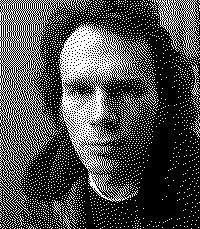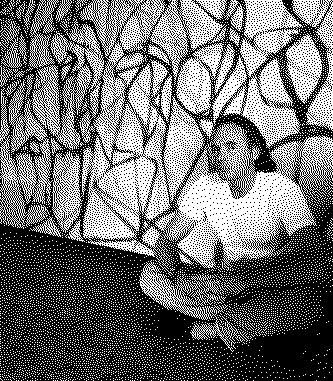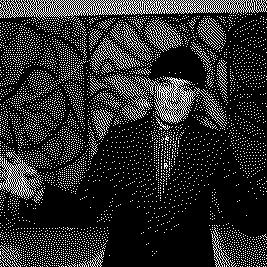Artists/Brice Marden
Fast Facts
Minimalist and Monochrome Beginnings
Marden initially gained recognition for his minimalist monochrome canvases. Early in his career, he created simple, yet powerful, single-color paintings, often composed of multiple panels with subtle variations in tone and hue.
Gestural and Calligraphic Lines
Over time, Marden's work evolved to incorporate more gestural and calligraphic lines. These lines, often reminiscent of Asian calligraphy, added a dynamic and lyrical quality to his work.
Exploration of Color
In his later works, Marden explored rich, complex color palettes. He moved away from monochrome to vibrant, multi-hued canvases, creating layered compositions that resonate with depth and emotion.
Influence of Nature and Landscape
Nature and landscape became significant influences in Marden's art. His abstract landscapes are interpretations rather than literal depictions, focusing on the essence and feeling of a place rather than its physical appearance.
: Marden's work shows a strong influence of East Asian art, particularly
Marden's work shows a strong influence of East Asian art, particularly Chinese and Japanese calligraphy and painting. This interest is evident in the fluidity and grace of his lines and forms.
Innovative Use of Materials
He is known for his innovative use of beeswax and oil paint, which gives his paintings a distinctive texture and luminosity.
Integration of Drawing and Painting
Marden often blurs the line between drawing and painting, integrating the two disciplines seamlessly in his works.
Evolution of Abstraction
Throughout his career, Brice Marden has consistently pushed the boundaries of abstract painting, evolving his style and technique while maintaining a focus on the fundamental elements of line, color, and form.
Biography



Brice Marden, an American artist born on October 15, 1938, in Bronxville, New York, and who passed away on August 9, 2023, in Tivoli, New York, played a pivotal role in the development of minimalist painting in the 1960s.
His artistic journey began with his education at Boston University (B.F.A., 1961) and Yale (M.F.A., 1963), after which he moved to New York City in 1963. By the mid-1960s, Marden had crafted a unique approach to color and form, evident in his monochromatic works and multi-paneled paintings that explore subtle tonal variations. These works often utilized encaustic, a method that involves mixing pigment with oil and beeswax, lending his pieces a distinctive lustrous and ethereal quality.
Marden's artistic vision evolved significantly over the decades. In the late 1970s, he was commissioned to create a set of stained-glass windows for the Basel Cathedral, a project that, although never realized, spurred him towards experimenting with color and light in new ways. This period marked a departure from his earlier monochromes towards a more vibrant palette and dynamic compositions. His travels, particularly to Rome, Pompeii, and later to parts of Asia including Thailand, Sri Lanka, and India, broadened his artistic influences. Marden's exposure to Asian art, especially Chinese calligraphy and poetry, infused his work with new forms and energies, as seen in his acclaimed Cold Mountain series, which combines airy calligraphic lines with pale backgrounds.
Throughout his career, Marden's work has been the subject of numerous solo shows and retrospectives, including a significant retrospective at the Museum of Modern Art, New York, in 2006. This exhibition, which later traveled to San Francisco and Berlin, was a comprehensive review of his career, offering insights into the evolution of his style and philosophy over four decades.
On a personal note, Marden's life was as rich and complex as his art. His first marriage was to Pauline Baez, sister of singer Joan Baez, with whom he had a son, Nicholas. The marriage ended, and by 1968, Marden had remarried artist Helen Marden, with whom he had two daughters. The family split their time among various residences, including a studio in Manhattan and estates in Tivoli, New York, Eagles Mere, Pennsylvania, and on the island of Hydra, Greece. Their home in Tivoli, Rose Hill, is notable for its historical significance and picturesque setting overlooking the Hudson River.
Brice Marden's legacy is that of a profound abstract painter, whose work over the past four decades has continually explored and redefined the boundaries of minimalist and abstract expression. His relentless pursuit of new expressions of color, form, and texture, coupled with influences from a wide array of cultures and histories, marks him as a significant figure in contemporary art (Wikipedia) (Encyclopedia Britannica) (The Art Story).
Importance
Brice Marden's importance in the art world is multifaceted and deeply rooted in his unique approach to painting, drawing, and his impact on minimalist art. His significance can be appreciated through various lenses:
Redefinition of Minimalism and Abstraction
Marden's work, especially his early monochromatic paintings, played a crucial role in defining minimalist painting. However, his oeuvre is not easily confined to a single category, as it embodies elements of abstract expressionism, color field painting, and lyrical abstraction. This diversity within his practice showcases his ability to transcend and redefine the boundaries of minimalism and abstraction (The Art Story) (The Museum of Modern Art).
Innovative Use of Materials and Techniques
Marden is known for his unique use of oil and beeswax, which lent his surfaces a lustrous, diaphanous quality. This technique contributed to the depth and texture of his works, distinguishing his minimalist approach from that of his contemporaries. His experimental approach extended to his drawings, where the intentional selection of paper and ink, along with his execution, invited viewers into a deeply personal space of his creative process (The Art Story) (The Museum of Modern Art).
Influence from and Integration of Diverse Cultures
Marden’s travels and profound interest in Asian art, particularly Chinese calligraphy and poetry, significantly influenced his later works. This incorporation of cultural elements into his art not only enriched his visual language but also bridged cultural divides, illustrating the universal language of abstraction (The Art Story).
Personal Connection and Intimacy in Art
Marden's work is celebrated for its ability to forge a personal connection with the viewer, a quality that is particularly evident in his drawings. According to Esther Adler, curator at MoMA, Marden’s drawings allow for a direct and close interaction with his art, highlighting the deeply personal nature of his work. This aspect of his art invites viewers to engage with it on a more intimate level, enhancing its impact and relevance (The Museum of Modern Art).
Legacy and Influence on Future Generations
Marden's exhibitions, such as the retrospective at MoMA in 2006, not only showcased his artistic evolution but also highlighted his influence on the art world. His dedication to his craft and ability to continually reinvent his working methods have left an indelible mark on contemporary art, influencing both his peers and younger artists (The Museum of Modern Art).
Technique
Brice Marden's approach to art is distinguished by several key techniques that have evolved and diversified throughout his career:
Use of Encaustic
Marden is renowned for his innovative use of beeswax mixed with oil paint, creating textured, luminous surfaces that add depth and richness to his monochromatic panels. This technique is evident in works like "Star" and "Summer Table," where the materiality of the surface plays a crucial role in the overall effect of the painting (The Art Story).
Adaptation of Measurements to Personalize Works
In his portrait works, Marden adapted the dimensions of the canvases to correspond to the physical characteristics of his subjects, as seen in the portrait of Patti Smith, where the height and width of the panels reflect Smith's height and shoulder width. This method of incorporating personal dimensions into his work adds a layer of intimacy and connection between the subject and the artwork (The Art Story).
Integration of Light and Color Influences
Marden's time in Greece significantly influenced his color palette, introducing brighter and more luminous colors into his work. His piece "Summer Table" reflects his observations of light on objects, showcasing his ability to translate environmental and natural light qualities into his color choices and compositions (The Art Story).
Drawing with Natural Implements
In the 1970s, Marden began creating drawings using long twigs dipped in ink, demonstrating a direct and intimate engagement with the material and the act of drawing. This technique allowed for a raw expression of line and form, as seen in works like "Mirabelle Addenda 3" (The Art Story).
Exploration of Linear and Gestural Forms
Following a visit to an exhibition of Japanese calligraphy in 1984, Marden's style shifted towards more gestural, linear forms, inspired by the calligraphic strokes and poetry of the Tang dynasty Chinese poet Han Shan. This period marked a significant evolution in Marden's work, moving away from the strict minimalism of his earlier pieces towards more expressive and dynamic compositions (National Gallery of Art).
Layering and Process
Marden's later works often involve intricate processes of layering and subtraction, as in "The Propitious Garden of Plane Image, Third Version." Here, Marden builds up layers of color to achieve the final hue on each panel, integrating his interest in light, process, and the visible spectrum into a cohesive visual experience (The Art Story).
















